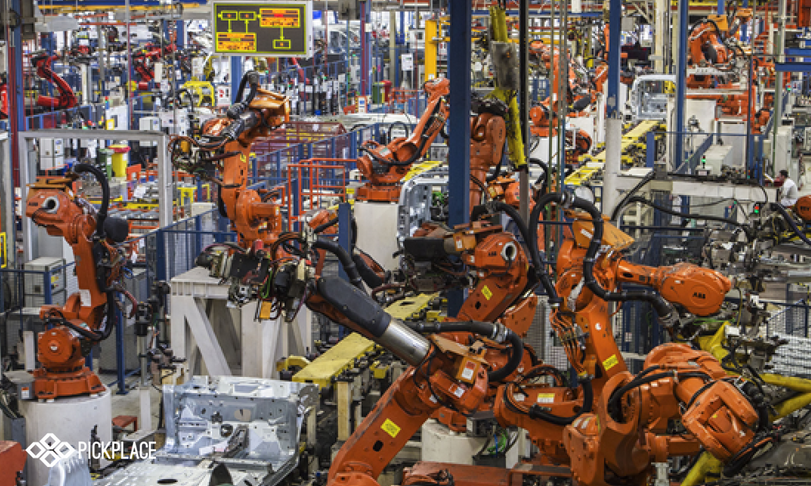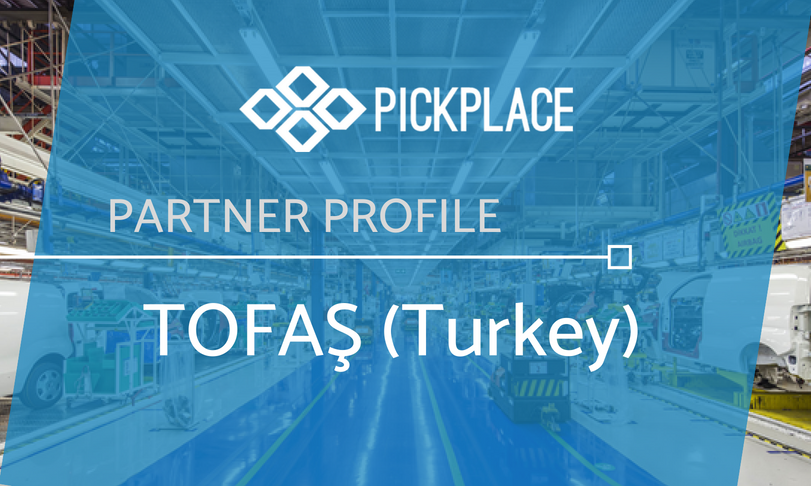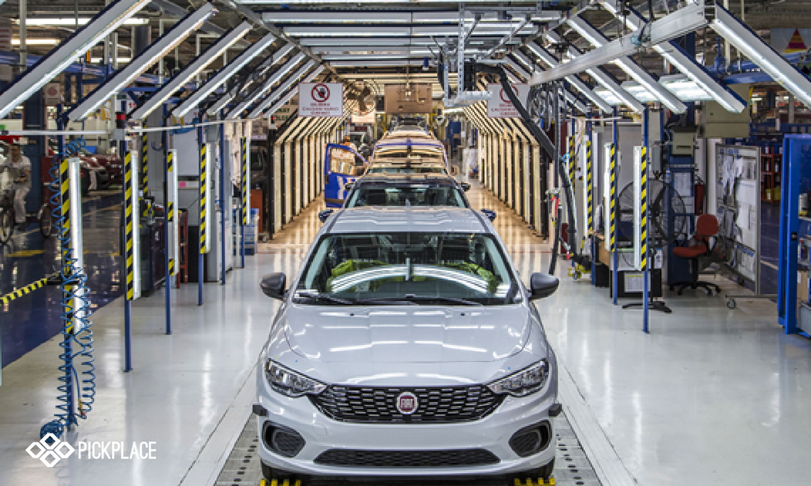In this series, members of the PICK-PLACE consortium are portrayed, starting with Turkish automotive company TOFAŞ. Nuri Ertekin, Industrial Research Specialist at TOFAŞ, answers the interview.
What is TOFAŞ?
TOFAŞ was established in 1968 and started production in 1971 by the late Vehbi Koç, founder of the Koç Group, and jointly owned by Koç Holding and FIAT Chrysler Automobiles. It is today one of FCA three globally strategic production hubs on over one million square meter plant. With its more than 10.000 employees, it currently has a production capacity of over 400.000 vehicles.
TOFAŞ holds gold level for World Class Manufacturing grading and is one of the six Fiat plants. Several Fiat models are produced in TOFAŞ and about 60% of them are for the export market.
TOFAŞ R&D unit was set up in 1994 and has now established its rightful position as the largest dedicated research and development centre within the Turkish Automotive industry, with a designated staff of more than 600. Research and development activities are concentrated on commercial vehicle design and development, as well as competitive production technologies. TOFAS Production Technology Development Department, as a function of R&D Centre, leads on average 1-2 major projects of car manufacturing lines’ development per year. TOFAŞ Production Technology currently employs 67 personnel and is its specific areas of expertise include 3D equipment design, automation, robotics, production analyses and safety.
 Production line at TOFAŞ.
Production line at TOFAŞ.
How did you learn about PICK-PLACE and why did you decide to join this project?
TOFAŞ not only has as a huge experience in robotic lines and related equipment such as dress pack, tool changers, grippers etc., but is also experienced about EU R&D project programs. It has completed a lot of projects within the Eureka and FP7 programs. TOFAŞ was invited to project consortium by other members who had met TOFAŞ at already completed shared projects.
Using robots to grasp different kinds of spare parts that have different sizes, shapes and weights is one of the most important problems in warehouses. If you want to automate your warehouse, you will need robots, different kinds of grippers, tool changers, etc. With a growing equipment, initial and running costs of system will increase. After investigating the project content, TOFAŞ thought that the project as a whole, and particularly the gripper that is going to be developed, will be extremely useful.
In the case of TOFAŞ, what’s your main contribution to PICK-PLACE?
With about 1000 robots on the shop floors, TOFAŞ is capable of benchmarking different technologies and features of a wide range of robot brands, functions, software and hardware utilities and performances. TOFAŞ has a background on international -varying- safety norms and installation standards. Multi-functional robots which handle the parts and perform welding operations -as well as sealing- on linear axis are used to obtain high flexibility. Moreover, TOFAŞ has 47 years of experience in automobile production. Every year we face hundreds of problems related to production – and solve them. So TOFAŞ has a huge experience about production problems, obstacles and solving methods.
At the beginning of the PICK-PLACE project, TOFAŞ identified a use-case scenario. In this regard, TOFAŞ is going to contribute to PICK-PLACE project by providing test material, giving feedback and supporting in the design of user friendly industrial equipment, defining equipment test criteria for acceptance, providing industrial testing areas for equipments that will be developed within the project.
 Industrial robots at TOFAŞ’ facilities.
Industrial robots at TOFAŞ’ facilities.
Which specific tasks do you think PICK-PLACE’s solution could help improve?
In the Spare Part Warehouse at TOFAŞ, 63.000 types of spare parts are delivered to 220 different dealers with outbound boxes. Every day about 600 outbound boxes are prepared by operators manually. Because of the manual outbound box preparation, there is always a probability of error at operation (confusing parts between boxes, putting a wrong number of parts in boxes; in other words, putting in extra parts or missing parts in the boxes). TOFAŞ spends an extra energy for protecting itself from this kind of mistakes, which can create customer disatisfaction.
So, TOFAŞ aims to automate the operation of preparing outbound boxes. However, grasping different kinds of parts that have different sizes, shapes and weights is not possible with the same gripper. A new generation of grippers or handling systems that can handle different parts is needed. This new generation system should be able to work with operators in the same area without a physical barrier or fence. Also, this system should be able to read the barcodes of the parts and boxes for detecting the correct pieces and taking/putting in pieces into the correct boxes.
What are your expectations regarding PICK-PLACE?
Every day thousands of different parts are handled and put into outbound boxes in the Spare Part Warehouse at TOFAŞ. In order to automate the process, grasping the different spare parts with the same gripper is the most important problem. And this is not only a challenge for TOFAŞ, but for the entire sector. At the end of the project, if the goals of the PICK-PLACE initiative are achieved, one of the biggest problems in warehouses will be solved. Moreover, new systems that will developed within the project will work with operators in the same area without physical barriers or fences.
I believe that at the end of the project, the goals of PICK-PLACE will be achieved and a new generation of handling systems will be successfully implemented in industrial warehouses In addition, with the help of the PICK-PLACE project, satisfaction of inner and outer customers will increase.


